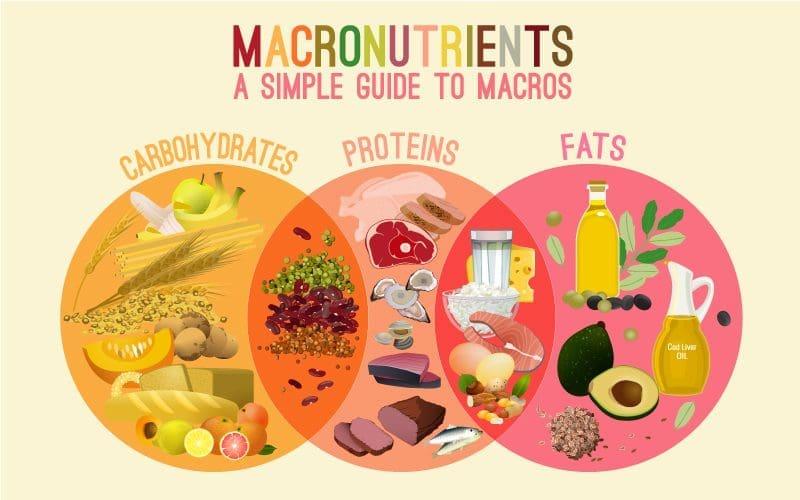In the journey towards achieving personal health and fitness goals, few challenges are as universally frustrating as hitting a plateau. That seemingly insurmountable barrier, where progress stalls and motivation wanes, is a common experience for many. Yet, within this obstacle lies an opportunity for growth and adaptation. Adjusting meal plans to overcome plateaus is not just about tweaking a few ingredients or shifting calories; it’s an art that involves understanding your body’s unique signals and responding with thoughtful, strategic changes. In this article, we delve into the nuances of nutritional adjustments, exploring how mindful modifications can reignite progress and transform the way you approach your dietary goals. Whether you’re a seasoned athlete or embarking on a new wellness journey, discover how to navigate these culinary crossroads with creativity and insight, and learn how to turn a plateau into a stepping stone towards success.
Breaking Through the Barrier: Understanding Plateaus in Nutrition
When progress stalls despite your best efforts, it’s time to re-evaluate your meal plans. Identifying and overcoming nutritional plateaus can be as simple as making a few strategic adjustments. Here are some suggestions to help you regain momentum:
- Vary Macronutrient Ratios: Sometimes, a plateau occurs because your body has adapted to your current macronutrient distribution. Consider shifting the balance between proteins, fats, and carbohydrates to stimulate change.
- Incorporate New Foods: Introduce a variety of nutrient-dense foods that you haven’t tried before. This can not only prevent boredom but also provide different nutrients that your body might be lacking.
- Adjust Portion Sizes: It might be time to re-evaluate your portion sizes. Slightly reducing or increasing portions can help your body break through the stagnation.
- Mindful Eating Practices: Pay attention to hunger cues and eat slowly to enhance digestion and satisfaction, which can indirectly influence your progress.
Experimenting with these changes can help you push past the plateau and continue on your journey towards your nutritional goals. Remember, small tweaks can lead to significant breakthroughs.

Crafting a Flexible Meal Plan: Key Adjustments for Renewed Progress
When you’ve hit a plateau, it’s time to introduce some flexibility into your meal planning. Start by evaluating your current caloric intake. Sometimes, minor tweaks in your daily calorie count can jumpstart progress. Consider implementing a cycle of varying calorie levels throughout the week to keep your metabolism on its toes.
- Incorporate more protein-rich foods: Protein can help in muscle repair and growth, which can be essential when overcoming a plateau.
- Experiment with meal timing: Adjusting when you eat, such as trying intermittent fasting, can sometimes be the change needed.
- Diversify your nutrient sources: Include a wider range of vegetables, grains, and lean proteins to ensure you’re not missing out on any essential nutrients.
Hydration is another key factor often overlooked. Ensure you’re drinking enough water, as dehydration can hinder metabolic processes. By embracing these adjustments, you allow your body to adapt and respond in new ways, paving the way for renewed progress.

The Role of Macronutrients: Balancing for Breakthroughs
Achieving the right balance of macronutrients is akin to orchestrating a symphony, where each nutrient plays a pivotal role in creating harmony within the body. To navigate through plateaus, it’s essential to recalibrate your intake of carbohydrates, proteins, and fats. Begin by assessing your current dietary ratios. If your energy levels are dipping, consider increasing your carbohydrate intake with whole grains and vegetables. For those seeking muscle growth, enhancing protein sources like lean meats, legumes, and tofu can lead to breakthroughs.
When recalibrating, consider these strategies:
- Increase Protein: To support muscle repair and growth, especially if you’re active.
- Adjust Carbs: If you feel sluggish, slightly increase complex carbs; for weight loss, focus on reducing simple sugars.
- Balance Fats: Integrate healthy fats such as avocados and nuts to maintain energy and support hormonal balance.
Experimenting with these adjustments can help to overcome stagnation, providing your body with the nourishment it needs to thrive.

Incorporating Variety: How Diverse Foods Stimulate Metabolism
Breaking through a metabolic plateau can often be as simple as adding a splash of diversity to your diet. Our bodies can adapt to routine meals, leading to stagnant metabolism. To reignite that internal fire, consider integrating a variety of foods into your meal plans. This not only keeps your taste buds entertained but also stimulates different metabolic pathways. Here are some ways to diversify your diet:
- Colorful Vegetables: Opt for a rainbow on your plate. Each color represents different phytonutrients that can boost metabolic functions.
- Protein Sources: Rotate between plant-based proteins like lentils and quinoa, and lean meats such as chicken or fish to keep your metabolism guessing.
- Whole Grains: Swap out regular white rice for quinoa, farro, or barley. These grains offer complex carbohydrates that keep energy levels steady.
- Spices and Herbs: Add a dash of cinnamon or turmeric, known for their metabolic-boosting properties, to your meals.
By diversifying your diet, you introduce new nutrients that can awaken a sluggish metabolism. This variety not only supports overall health but also ensures your body remains adaptable, ready to tackle any plateau that comes your way.

